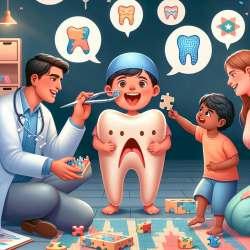The prevalence of malocclusion in children with Autism Spectrum Disorder (ASD) has been the subject of recent research, shedding light on the unique dental challenges faced by this population. The systematic review and meta-analysis titled "Malocclusion characteristics amongst individuals with autism spectrum disorder" provides valuable insights that practitioners can use to improve their skills and outcomes for children with ASD.
The study found that individuals with ASD are more likely to experience certain types of malocclusion compared to those without ASD. Specifically, the most prevalent malocclusion characteristics in individuals with ASD were:
- Increased maxillary overjet (39%)
- Crowding (33%)
- Angle’s Class II (27%)
- Angle’s Class III (8%)
- Open bite (8%)
These findings suggest that children with ASD have higher odds of Angle’s Class II, Angle’s Class III, open bite, and increased maxillary overjet than their non-ASD counterparts. Understanding these specific malocclusion characteristics is crucial for practitioners, as it can inform targeted interventions and treatment plans.
Here are some actionable steps practitioners can take based on these findings:
- Early Screening and Diagnosis: Early identification of malocclusion can lead to prompt intervention, which is particularly important for children with ASD who may have difficulty communicating discomfort or pain.
- Multidisciplinary Approach: Collaboration with orthodontists, pediatric dentists, occupational therapists, and speech-language therapists can provide comprehensive care that addresses both dental and developmental needs.
- Behavioral Management: Implementing strategies to manage parafunctional habits such as mouth breathing and biting objects, which are more common in children with ASD, can help mitigate the risk of malocclusion.
- Parental Education: Educating parents about the importance of oral hygiene and regular dental check-ups can empower them to support their child's dental health effectively.
Encouraging further research is also essential. The study highlighted the need for high-quality research to better understand the relationship between ASD and malocclusion. Practitioners can contribute to this body of knowledge by participating in research studies, sharing clinical observations, and collaborating with academic institutions.
To read the original research paper, please follow this link: Malocclusion characteristics amongst individuals with autism spectrum disorder: a systematic review and meta-analysis.










